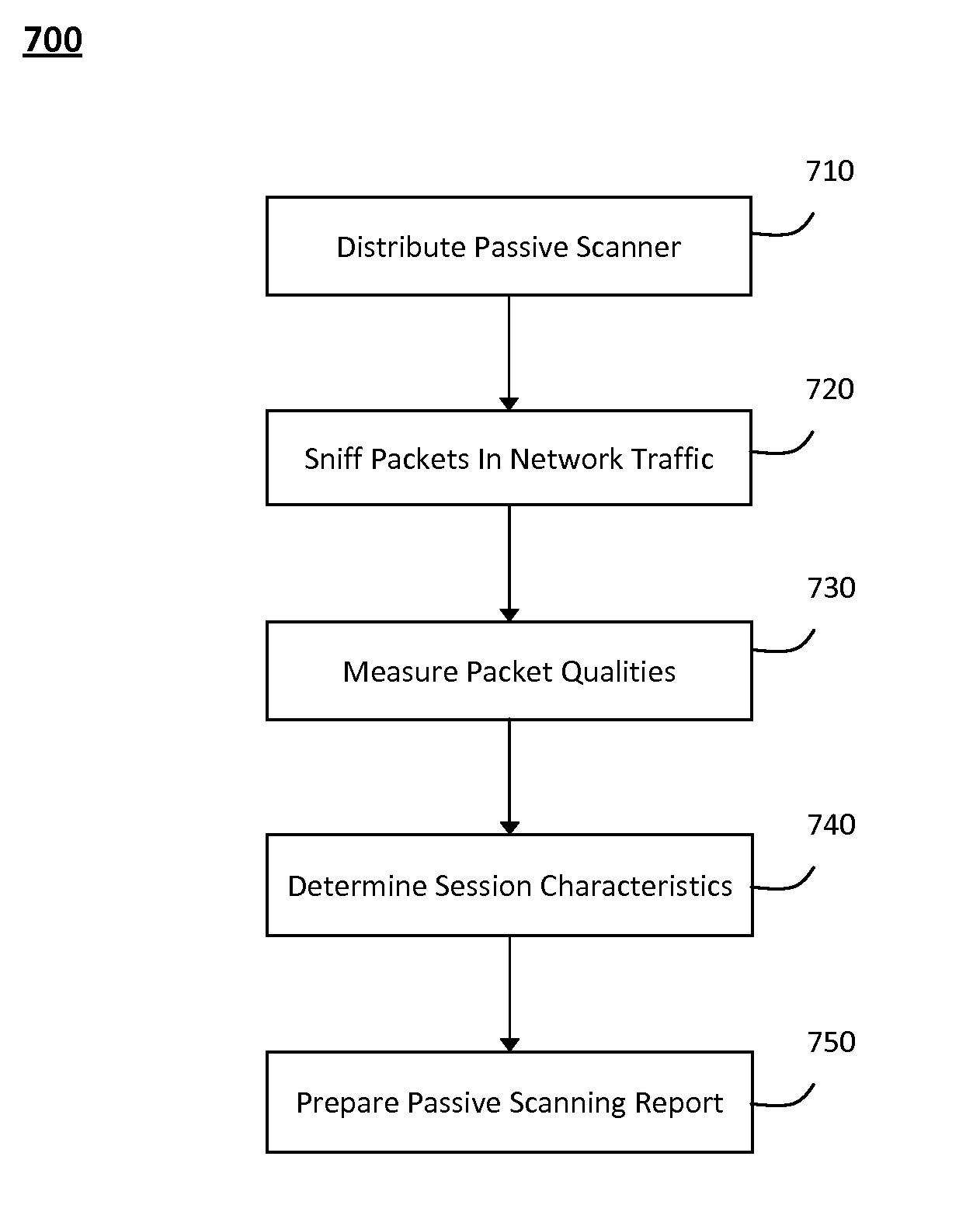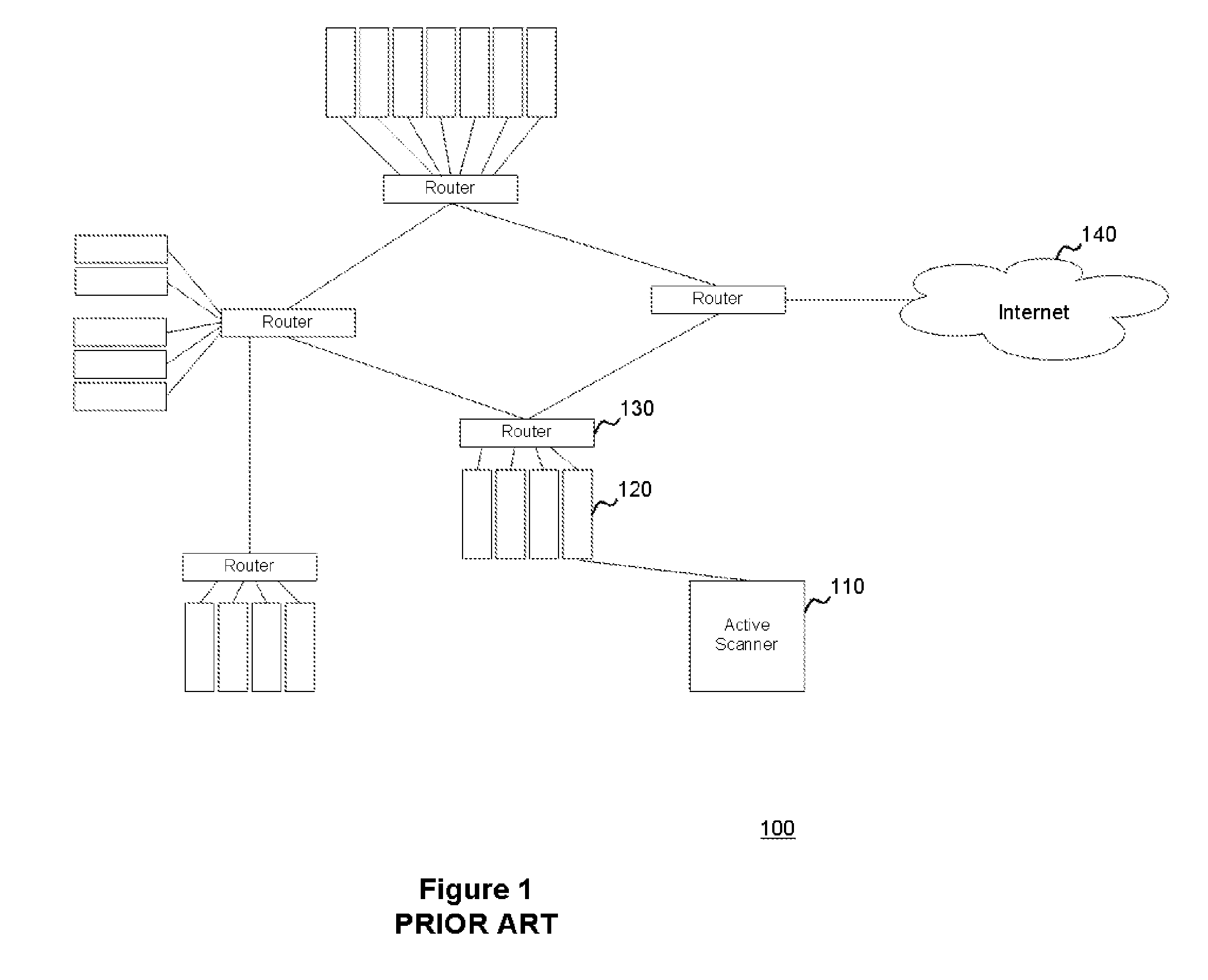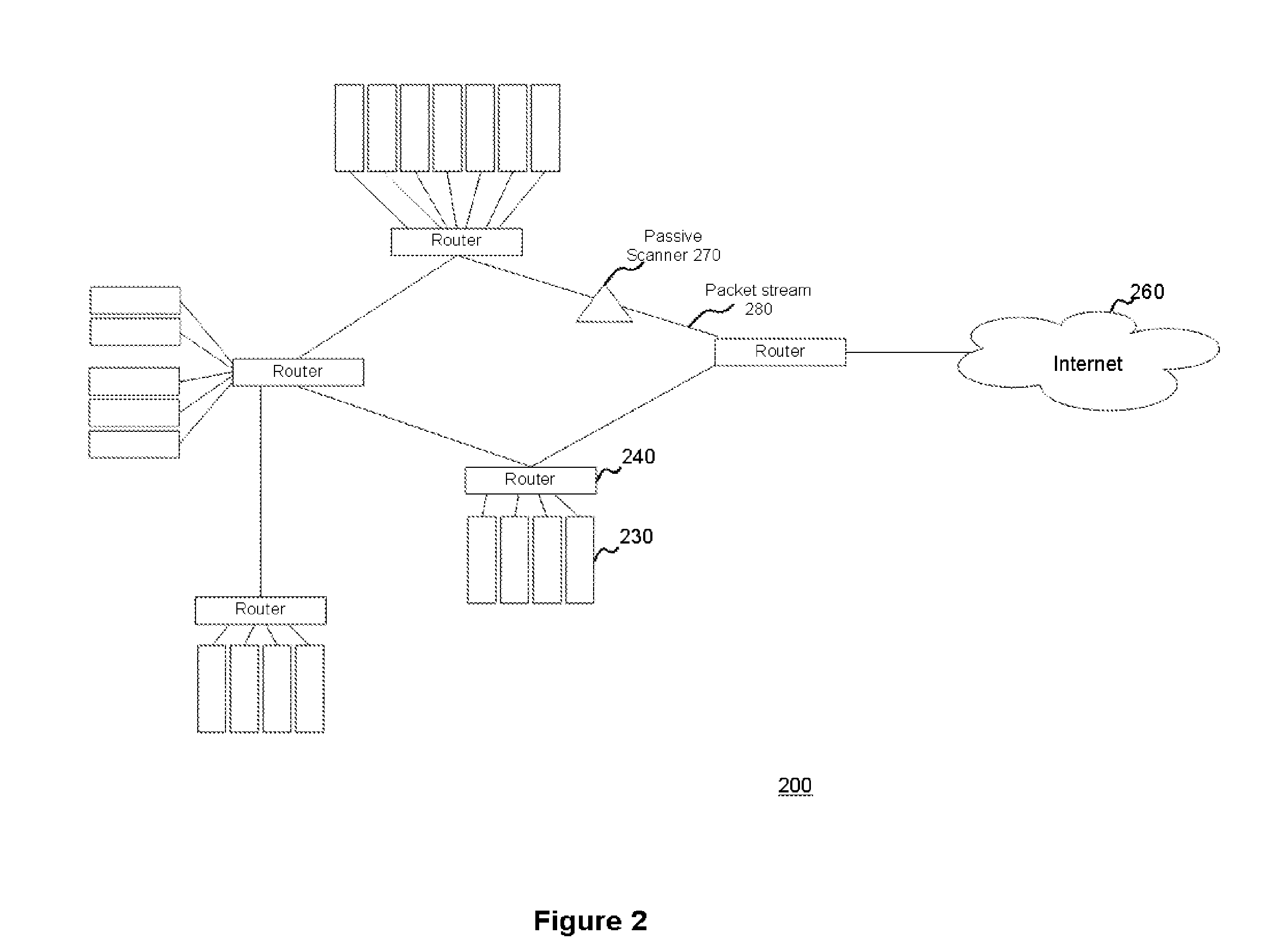System and method for passively identifying encrypted and interactive network sessions
a network session and encrypted technology, applied in the field of system and method for passive identification of encrypted and interactive network session, can solve the problems of limiting the effectiveness of active vulnerability scanners, denying access, and illegal or unauthorized users exploiting vulnerabilities
- Summary
- Abstract
- Description
- Claims
- Application Information
AI Technical Summary
Benefits of technology
Problems solved by technology
Method used
Image
Examples
Embodiment Construction
[0018]According to one aspect of the invention, FIG. 2 illustrates a schematic diagram of an exemplary system 200 for passively identifying encrypted and interactive network sessions. In particular, the system 200 shown in FIG. 2 may generally include one or more passive vulnerability scanners 270 that can observe traffic in a packet stream 280 travelling in a network to identify vulnerabilities in the network and detect activity that may target the identified vulnerabilities, and may further include one or more active vulnerability scanners that can communicate packets or other messages within the network to detect new or changed information describing various routers 240, hosts 230, servers 230, or other devices 230 in the network. For example, in one implementation, the active vulnerability scanners may include active vulnerability scanners 410 and 420 (e.g., illustrated in FIG. 4), which may scan certain hosts, servers, or other devices 230 in the network during a security audit...
PUM
 Login to View More
Login to View More Abstract
Description
Claims
Application Information
 Login to View More
Login to View More - R&D
- Intellectual Property
- Life Sciences
- Materials
- Tech Scout
- Unparalleled Data Quality
- Higher Quality Content
- 60% Fewer Hallucinations
Browse by: Latest US Patents, China's latest patents, Technical Efficacy Thesaurus, Application Domain, Technology Topic, Popular Technical Reports.
© 2025 PatSnap. All rights reserved.Legal|Privacy policy|Modern Slavery Act Transparency Statement|Sitemap|About US| Contact US: help@patsnap.com



